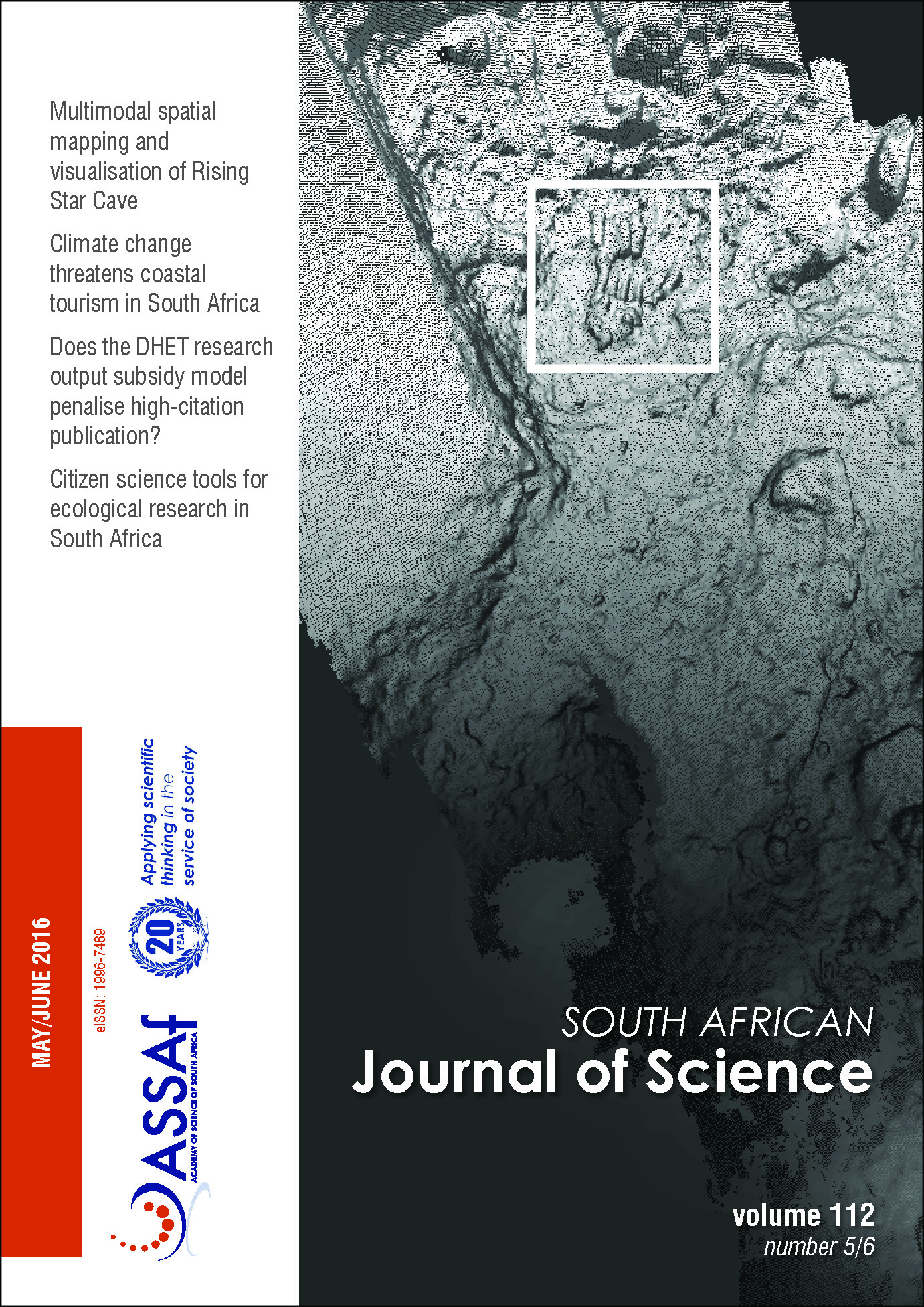The composition of ambient and fresh biomass burning aerosols at a savannah site, South Africa
DOI:
https://doi.org/10.17159/sajs.2016/20150223Keywords:
air quality, chemical composition, rural environment, submicron particles, sulfateAbstract
Atmospheric aerosols play a key role in climate change, and have adverse effects on human health. Given South Africa’s status as a rapidly-developing country with increasing urbanisation and industrial growth, information on the quality of ambient air is important. In this study, the chemical composition of ambient particles and the particles in fresh biomass burning plumes were studied at a savannah environment in Botsalano, South Africa. The results showed that Botsalano was regularly affected by air masses that had passed over several large point sources. Air masses that had passed over the coal-fired Matimba power station in the Waterberg, or over the platinum group metal smelters in the western Bushveld Igneous Complex, contained high sulfate concentrations in the submicron ranges. These concentrations were 14 to 37 times higher compared with air masses that had passed only over rural areas. Because of the limited nature of this type of data in literature for the interior regions of southern Africa, our report serves as a valuable reference for future studies. In addition, our biomass burning study showed that potassium in the fresh smoke of burning savannah grass was likely to take the form of KCl. Clear differences were found in the ratios for potassium and levoglucosan in the smouldering and flaming phases. Our findings highlight the need for more comprehensive chamber experiments on various fuel types used in southern Africa, to confirm the ratio of important biomass burning tracer species that can be used in source apportionment studies in the future.
Published
Issue
Section
License

This work is licensed under a Creative Commons Attribution 4.0 International License.

All articles are published under a Creative Commons Attribution 4.0 International Licence
Copyright is retained by the authors. Readers are welcome to reproduce, share and adapt the content without permission provided the source is attributed.
Disclaimer: The publisher and editors accept no responsibility for statements made by the authors
How to Cite
- Abstract 817
- PDF 732
- EPUB 191
- XML 227












.png)